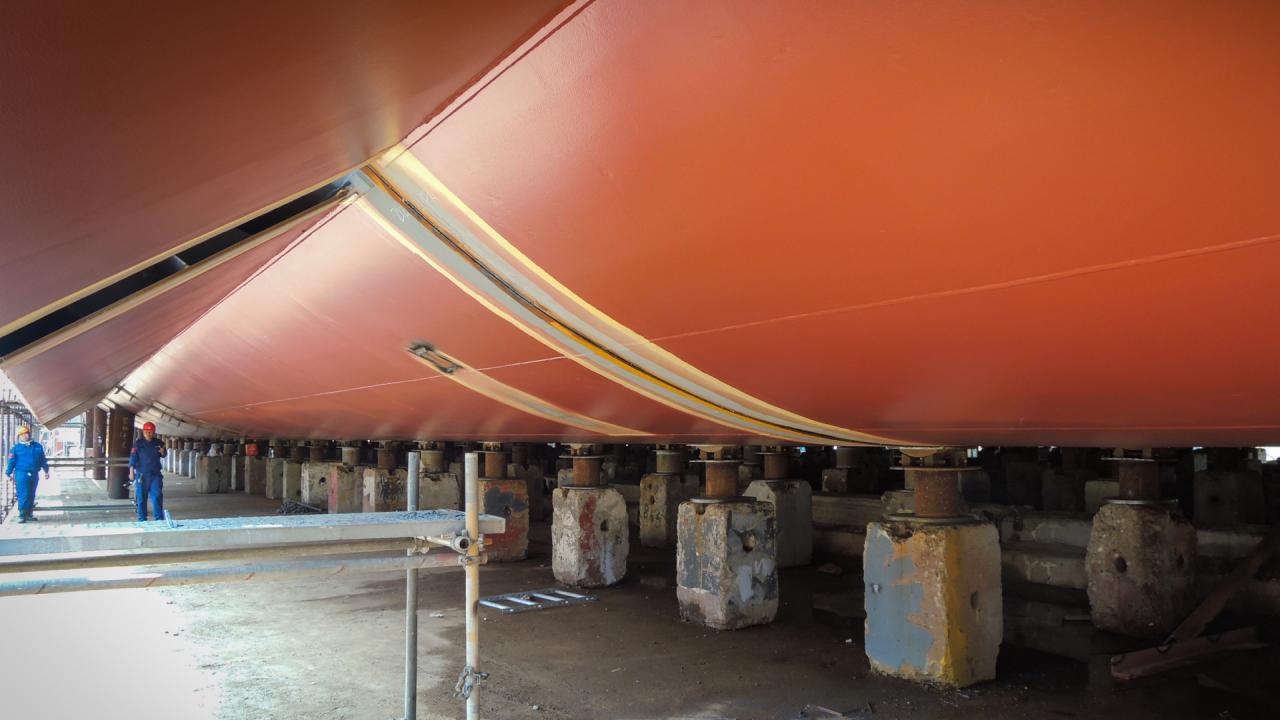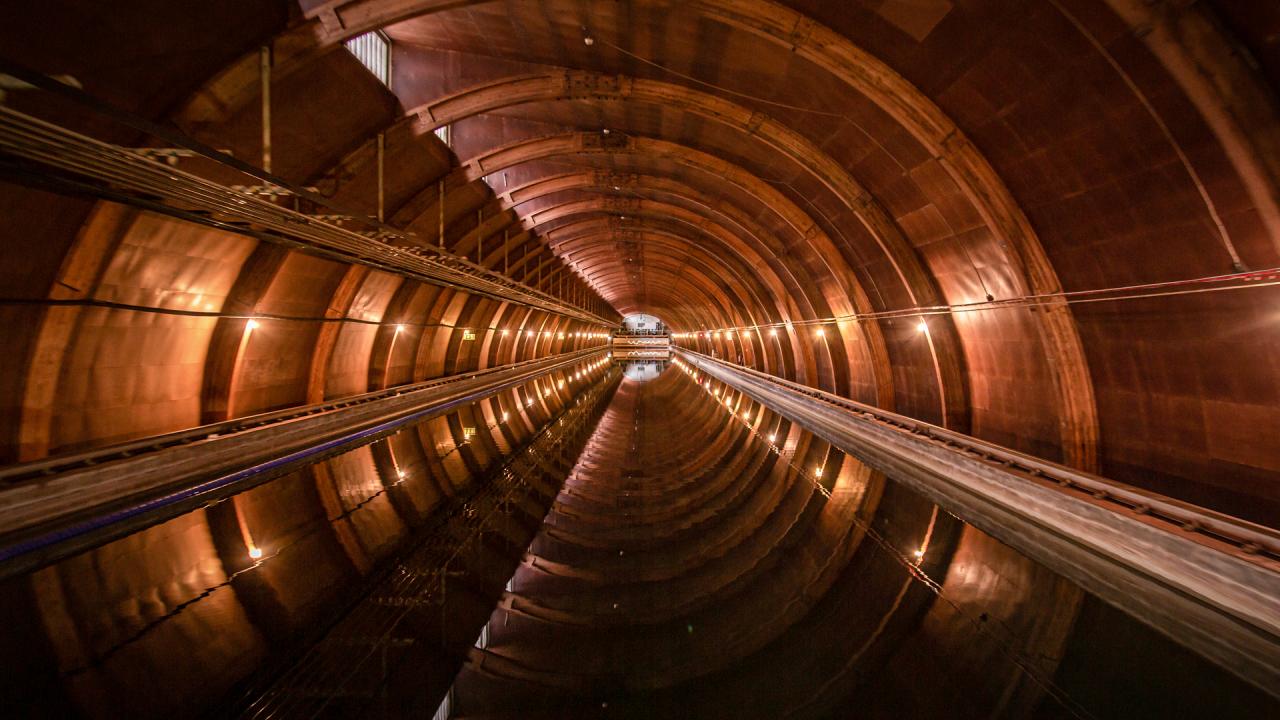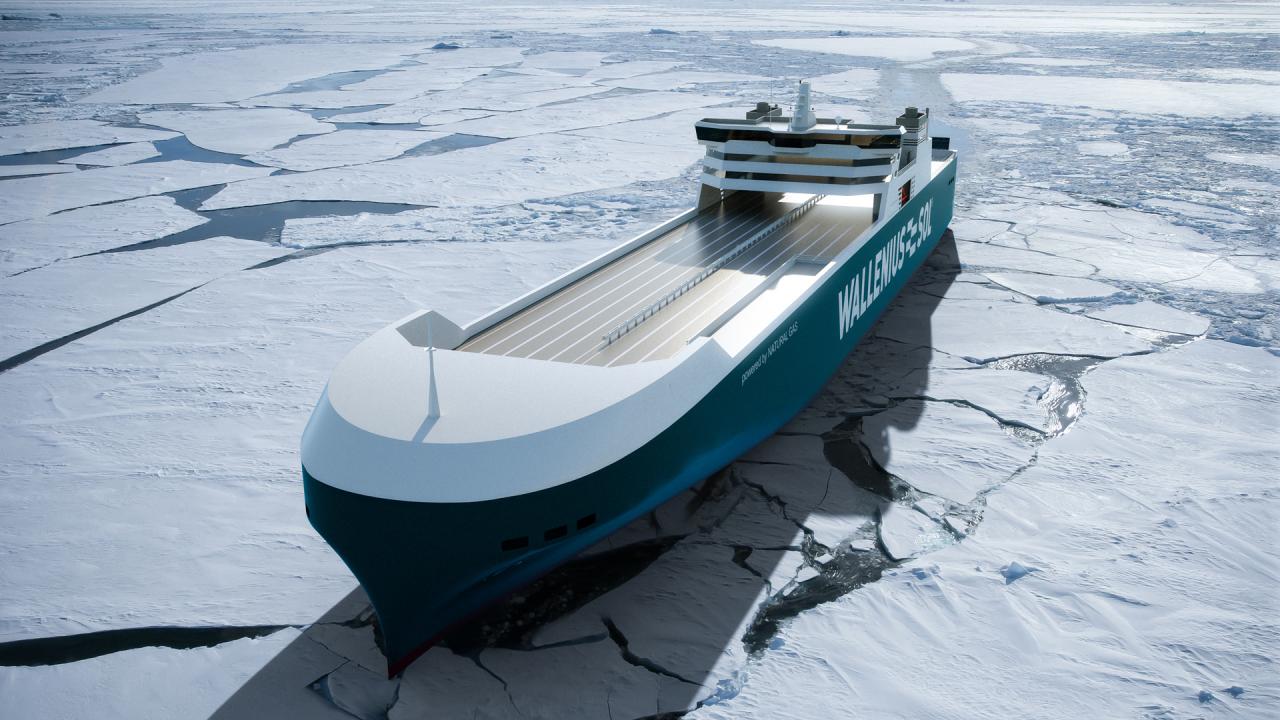How our ships withstand extreme cold
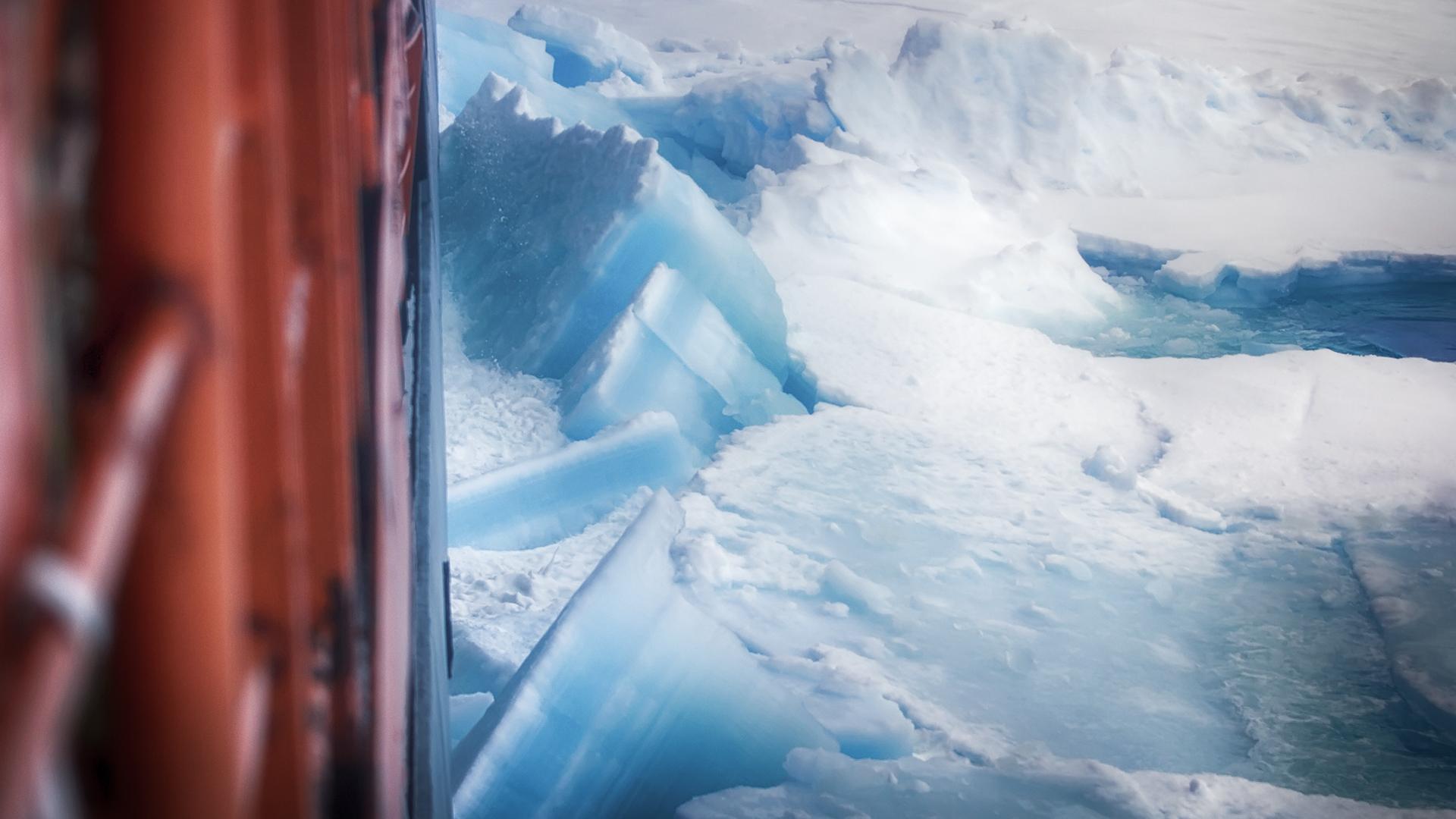
Ice can be a massive challenge for maritime shipping. So when WALLENIUS SOL designs its new vessels, their ice breaking qualities are vitally important. We asked the design team how the ships measure up in extremely icy conditions.
ON THE BALTIC SEA, some winters are harsher than others. In 2010, a number of vessels were stranded in ice as far south as the Sea of Åland. One ship, carrying several tonnes of paper, was unable to navigate the ice ridge off Sundsvall, causing problems for the German printers who were waiting impatiently for their shipments. The extraordinary solution involved ferrying tonnes of paper in 15 to 20 articulated lorries.
To avoid similar incidents happening again, WALLENIUS SOL decided to equip its new ships with robust ice-breaking qualities.
“For a few months of the year, the ice conditions in the far north of the Bothnian Bay are classed as extreme. That is, the ice expands to over one metre in thickness,” explains Martin Carlweitz, Project Coordinator for the WALLENIUS SOL Operational Team. He adds:
“As a result, we wanted to construct ships that could operate in these areas and manage on their own as far as possible without ice-breaking assistance. When assessing the specifications, it was clear we had to equip the vessels to meet the highest ice class, 1A Super. This meant reinforcing the hull and providing sufficient machine power to break through the ice safely.
Artificial ice and a seven-metre long model
Pack-ice ridges and belts of ice slush have the greatest impact on maritime shipping on the Baltic Sea in winter. In these conditions, even ice-reinforced vessels with powerful machines can be difficult to operate without the help of an icebreaker. To ensure the ships could withstand these ice conditions, the design team from WALLENIUS SOL and Wallenius Marine visited the Aker Arctic ice test facility in Finland. A seven-metre long model of the ship was constructed to navigate through the water containing artificial ice.
“The ice test confirmed the vessel could effectively navigate ice ridges. The model broke the ice and pressed it under the surface, which was exactly what we wanted,” said Carl-Johan Söder, Design Manager at Wallenius Marine. He adds:
“We have a bulbous bow which cracks the ice from below, and a stern which pushes down ice floes when the vessel turns. This is advantageous when the ships are carrying lighter loads.
The ice-class indicates the capacity of a ship to move through ice. Ice-classed vessels are ice-reinforced, to ensure the hull can withstand the ice pressure. They are mainly strengthened in the front section of the ship, and in a belt around the waterline. On the Baltic Sea, a vessel’s ice reinforcement usually extends one metre above, and one to two metres below the waterline.
The ice-reinforcement on WALLENIUS SOL’s ships consists of a belt approximately five metres above and below the waterline. This runs higher and deeper in the prow, as this is where the pressure is greatest.
Protruding sections to withstand pressure
Ice, and the need to move astern in ice, can create excessive pressure which doesn’t occur during normal operation, affecting the rudder, propellers and protruding sections of the hull in particular.
“Since moving parts can be damaged by the ice, we opted against using a so-called flap rudder. In terms of design, we focus on relatively large bilge keels instead. It’s important these are built to be strong enough, just like the rudder and propeller,” explains Martin.
Another challenge the ice poses is that it can block valves and give rise to other problems. For example, low temperatures may cause the ballast water to freeze, if the tanks are not heated.
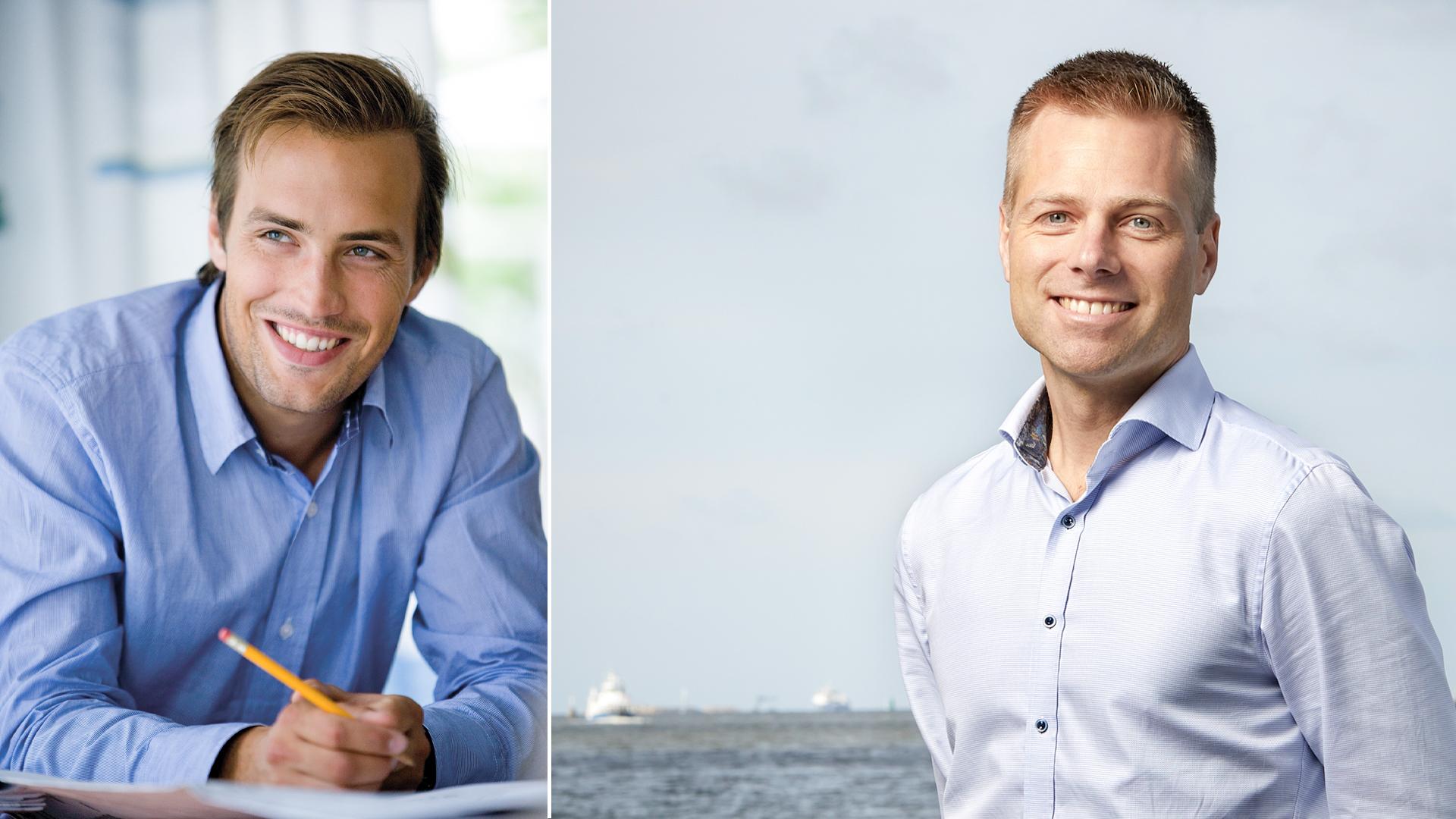
In the new ships, hydraulic oil is heated until it is free-flowing. The high ice chest reduces the risk of ice closing off the inlet to the machine cooling facility, which is fitted with a backup system: if the ice blocks off the inlet, the ballast water can be used as a coolant. There are also heating coils and a bubble system that ensure the ballast water in the tanks doesn’t freeze.
“All external equipment on board will be able to withstand temperatures as low as -35 degrees Celsius. Fire hydrants and other equipment are fitted with ‘tracings’, that is, electric cables and insulation that heat the pipes and prevent freeze damage,” adds Martin.
The Swedish-Finnish system used for first-year ice in the Baltic Sea comprises six classes, with different requirements regarding construction, machine power and performance on ice. Vessels meeting the highest classification – 1A Super – can navigate ice thickness up to 100 centimetres.
In the far north of the Bothnian Bay, ice class 1A is mandatory from 21 January to 10 May, with 4,000 tonnes of dead weight required during the toughest period.
“When the first vessel leaves the shipyard in China in 2021, it’ll be the world’s first ice-classed RoRo ship running on multi-fuel, and with a dead weight as high as 26,900 tonnes,” Martin adds.
The new ships in detail
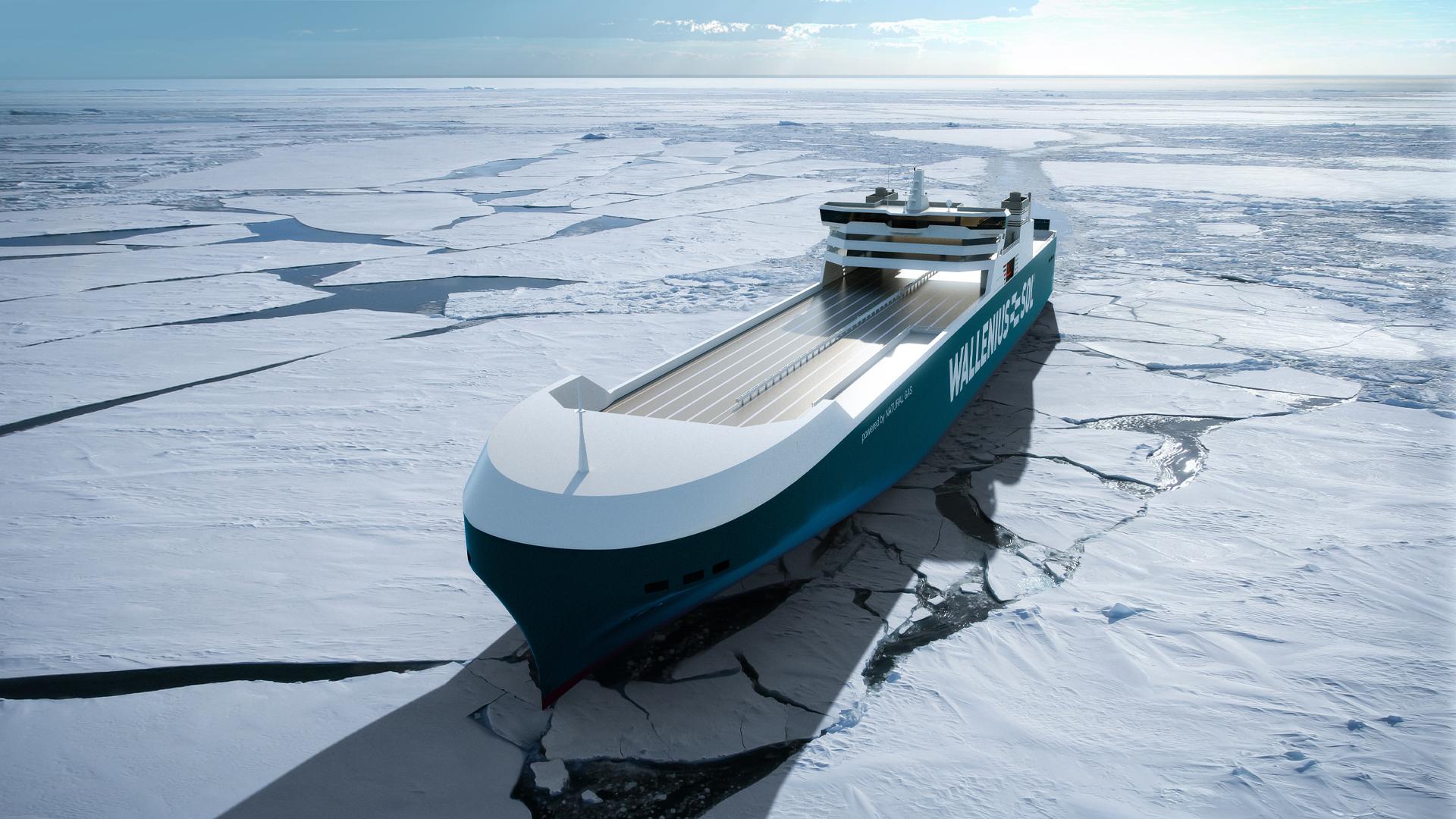
Length: 241.7 metres
Width: 35.2 metres
Max draught: 8.8 metres
Dead weight: 26,900 tonnes
Optimised for: Transportation of paper products for the forestry sector. Can also be used for other RoRo loads.
Engines: Multi-fuel (compatible with LNG, LBG, diesel and synthetic diesel)

